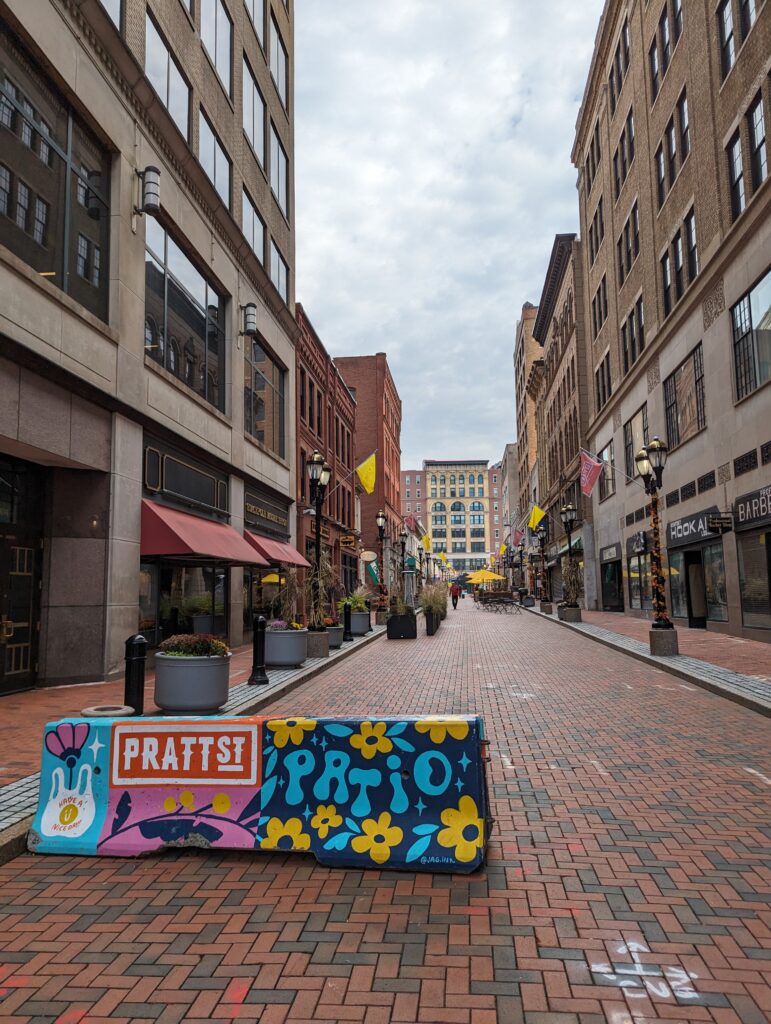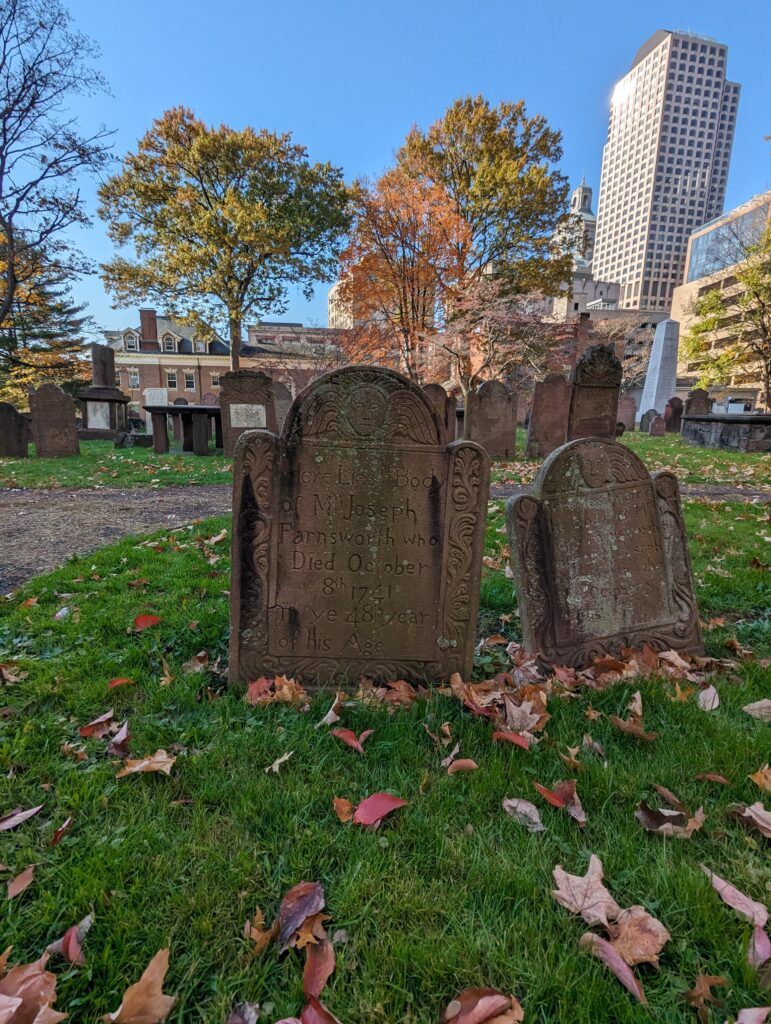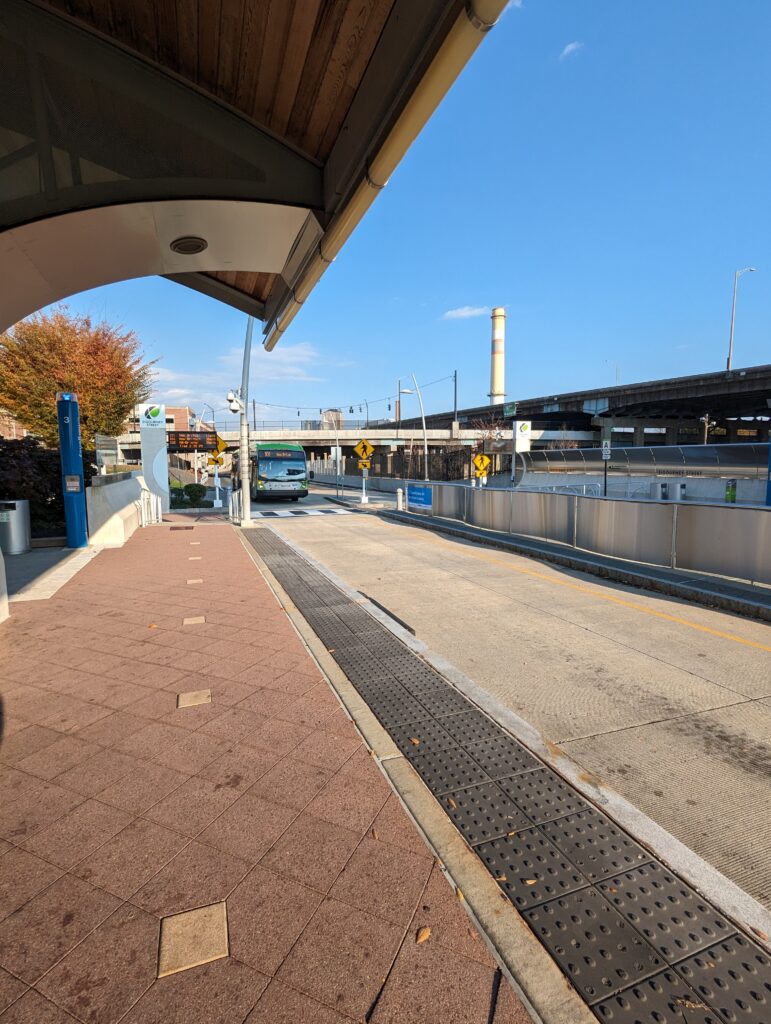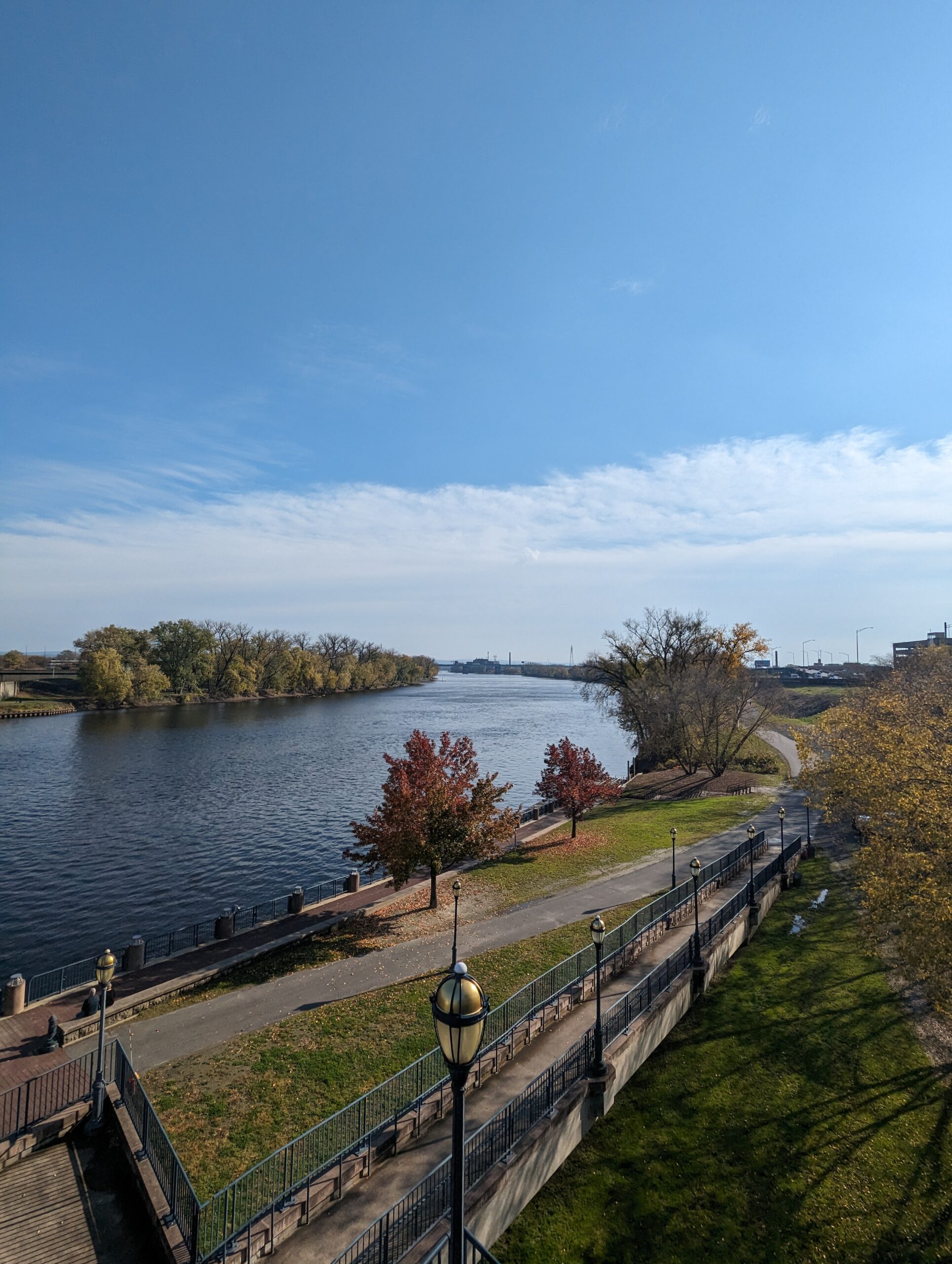The Northeast is full of small, under-the-radar cities with rich histories, many of which have gone through tough times since the mid-20th century. Hartford, the capital of Connecticut, was particularly hard-hit by urban decline over the last several decades. Freeways and urban renewal projects demolished vast swaths of the city’s historic urban fabric going back to the 17th century. As a result, I had low expectations going in, so I was pleasantly surprised by Hartford’s vibrant city center and nearby neighborhoods in a few-hour-long daytrip there in November, and there was a lot more left to see had I made it an overnight trip.
Downtown
Downtown Hartford is a poster child for the ravages of mid-20th century American urban planning. Freeways (planned by New York City planner Robert Moses) cut off the center city from the Connecticut River to the east and dense neighborhoods to the north and west. Countless historic buildings were demolished for the roadways and their massive interchanges, while urban renewal projects bulldozed block after block in favor of parking lots and suburban-style office buildings. The efforts were particularly targeted at Black communities that still feel the effects to this day. And yet, they didn’t bulldoze everything, and the city is making new strides to repair some of the earlier damage.
After getting off the train from New York at the 19th-century Romanesque Hartford Union Station, (which is seeing more service and higher ridership lately), I walked past a few blocks of parking lots towards the city center. I got a great vegetarian Banh Mi at Banh Meee, which is located around the corner from a whole block of beautiful historic facades on Asylum Street between Ann Uccelo and Haynes Streets that remain intact, including the spectacular Goodwin Hotel (only the facades are historic – the interiors were rebuilt as the podium for the office tower that rises behind).

Nearby is perhaps the biggest success story of Downtown Hartford’s revitalization: the one-block-long Pratt Street. The narrow, brick-paved street is lined with bars and restaurants at the base of historic buildings, and is a great example of a space that closed to traffic during Covid and has remained pedestrian-only even as the city has opened back up. I wanted to try Urban Lodge Brewing, but it was a little too early in the day for a beer; the combination florist/bakery Bloom Bake Shop next door is also highly rated.
I next checked out the Old State House, where the Connecticut Legislature met in the late 18th and early 19th centuries. It houses a great museum, including exhibits on the Amistad trial, which was partly conducted here. Just east of there is one of Hartford’s biggest attempts at repairing the damage of mid-20th century urban renewal: the Mortensen Riverfront Plaza. Interstate 91 cut off Downtown Hartford from the Connecticut River for decades before the Plaza opened in 1999 following a long planning effort, bridging over the freeway and providing a continuous connection to new park space along the riverfront.

Heading back towards the center of Downtown, I passed through Travelers Plaza, the headquarters of Travelers Insurance. Hartford is the “Insurance Capital of the World,” with the headquarters of several major insurance companies located in the city. Much of the urban renewal that destroyed the historic fabric of the city involved the construction of huge office complexes like these, many of which are connected by skybridges, which can kill street life by removing pedestrians from the sidewalk.
Between the office towers in this part of Downtown Hartford are a couple remaining historic sites. The Wadsworth Atheneum is the oldest public art museum in the US. Kitty-corner from it is the Center Church, a congregation dating back to the 17th century, although this building was completed in 1807. The church is surrounded by the Ancient Burying Ground, which is full of remarkably well-preserved headstones dating back to its founding in the 1600s.

Across the street from both of these historic monuments is the somewhat out of place Bushnell Plaza complex. The brutalist towers were designed by famed architect I.M. Pei in the 1960s. The barren, windswept plaza at their base includes some sculptures. Although I have a soft spot for brutalist architecture, I can’t say this was Pei’s best work.
Around the Capitol
Just down the block to the west is an entrance to Bushnell Park, Hartford’s beautiful central green space. The park was approved by Hartford voters in 1853 as the first publicly funded park in the nation. Designed by landscape architect Jacob Weidenmann, a frequent collaborator of New York Central Park designer Frederick Law Olmsted, the park was busy even on the cool fall weekday when I visited.

At the southwest corner of the park is the Connecticut State Capitol. Completed in 1876 to replace the Old State House in the center of downtown, the Capitol is a spectacular building designed by Richard Upjohn. Its marble exterior is covered in Gothic arches and friezes depicting Connecticut history. Inside, you can see the massive Venetian style House of Representatives chamber and the Senate chamber in which legislators are seated around a circular table, an arrangement I had not seen before. The golden dome at the peak of the building is intricately painted on the inside.
The Frog Hollow neighborhood surrounding the Capitol building appears to be undergoing rapid gentrification. A few blocks west along Capitol Avenue, I got an excellent oat milk cappuccino at Story and Soil Coffee. Several other new, hip businesses are on the same block. The side streets nearby are lined with a distinctive style of small, three-story, red-brick apartment buildings.
The old Billings Forge factory a block south of Capitol Avenue is now a mixed-income apartment complex. Fire by Forge, a cafe and restaurant in the complex, is operated by a community organization that provides job training opportunities to people with barriers to employment.
Farther Afield
I quickly discovered that I had underestimated the amount of time I could spend in Hartford. I didn’t make it to Hartford’s number one attraction, the Mark Twain House and Museum, where the famous author lived for a couple decades and wrote his most famous works. Next door is the Harriet Beecher Stowe House, also now a museum. The houses are in the historic Asylum Hill neighborhood in the western part of Hartford.
The nearby Parkville neighborhood has buildings I wanted to see like the early-20th century Underwood Typewriter Factory that now houses arts organizations and the new Parkville Market food hall.

Down in the southeastern part of the city, along the Connecticut River, I would love to check out the historic Colt Armory, where firearms were manufactured for over a century (now home to Thomas Hooker Brewing). The National Parks Service is working on turning the complex into a National Historical Park.
On my way out of town, I took a CT Transit bus down the CTfastrak Busway. The Busway was an impressive piece of bus rapid transit infrastructure, especially for a city as small as Hartford. It runs along old rail right-of-way about ten miles from Hartford to New Britain, carrying frequent buses along a completely traffic-free corridor. At the end of the line in New Britain, routes fan out to other parts of Connecticut (I took the route that continued to Waterbury, where I caught a Metro-North train back to New York). It seemed like a great model for cities that don’t have the funding to build a full-on rail system (or that don’t have a single route that would have high enough ridership to justify such an investment).

